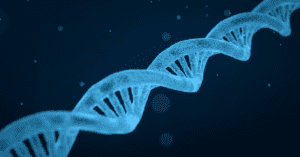
Myoclonus is a neurological clinical sign marked by sudden, quick, and involuntary muscle contractions or jerks. These contractions can happen in one muscle group or in several muscle groups at the same time. Myoclonus can be a single incidence or occur in a repetitive pattern. The intensity and frequency of myoclonus may vary widely, ranging from mild and barely noticeable to severe and disruptive. The underlying mechanism of myoclonus involves the rapid contraction and relaxation of muscles, often resulting from the sudden discharge of nerve cells in the brain and spinal cord.
What Causes Myoclonus?
Causes of myoclonus can vary and include neurological, metabolic, and genetic factors. One common cause is the malfunction of the central nervous system, particularly the brain and spinal cord. Conditions such as epilepsy, brain injury, or neurodegenerative disorders can trigger myoclonus. Metabolic disturbances, including kidney or liver failure, may also lead to myoclonus. Certain medications, especially those affecting the central nervous system, can induce myoclonus as a side effect. Additionally, toxins and exposure to certain chemicals can contribute to developing myoclonus. In some cases of myoclonus, genetics also play a role. Certain genetic mutations can make people more likely to get this condition, which can lead to forms of myoclonus that are passed down through families. In such cases, a family history of myoclonus or related neurological disorders is often present.
How to Diagnose and Treat Myoclonus?
Diagnosing myoclonus involves an extensive evaluation by a healthcare professional, typically a neurologist. The diagnostic process may include a thorough medical history review, physical examination, and various diagnostic tests. Electromyography (EMG) and electroencephalography (EEG) are commonly used to assess muscle activity and electrical patterns in the brain, helping to identify the underlying cause.
Treatment of myoclonus depends on the root and the severity of symptoms. When myoclonus is caused by another medical condition, treating the underlying condition becomes an essential part of the therapy. Medications that regulate neurotransmitters (the chemicals that allow neurons to communicate with each other) may be prescribed to help control myoclonus. In some cases, lifestyle changes, stress management, and physical therapy may be recommended to improve overall well-being and reduce the frequency of myoclonus. For individuals with severe myoclonus, surgical intervention may be considered as a last resort.
How is Myoclonus Related to Ataxia?
Myoclonus and ataxia often exist together due to shared involvement of the cerebellum. Responsible for coordinating movements, the cerebellum may malfunction in some conditions and lead to ataxia, causing unsteady movements. At the same time, abnormal cerebellar firing contributes to myoclonus, triggering sudden muscle jerks. Friedreich’s ataxia is an example of this correlation, where genetic factors impact the cerebellum, resulting in both myoclonus and ataxia.
If you would like to learn more about myoclonus, take a look at these resources by the Mayo Clinic and the NIH National Institute of Neurological Disorders and Stroke.
Snapshot Written by: Summer Dong
Edited by: Priscila P. Sena
Read Other SCAsource Snapshot Articles

Snapshot: What is the cerebellar cognitive affective syndrome (CCAS) scale?
Cerebellar cognitive affective syndrome (CCAS) is a condition where cognitive and emotional abilities are affected due to cerebellar damage. Historically, the cerebellum was identified as the part of the brain Read More…

Snapshot: What is RFC1?
RFC1 is a gene that encodes for replication factor C subunit 1, a component of the protein replication factor C (RFC), which plays an important role in DNA synthesis. RFC Read More…

Snapshot: What is the Brief Ataxia Rating Scale (BARS)?
How do you accurately measure something as nuanced as coordination? For clinicians assessing ataxia, this question has driven the development of various rating scales. The Brief Ataxia Rating Scale is Read More…
References
Agarwal, P., & Frucht, S. J. (2003). Myoclonus. Current opinion in neurology, 16(4), 515–521. https://doi.org/10.1097/01.wco.0000084231.82329.9c
Caviness J. N. (1996). Myoclonus. Mayo Clinic proceedings, 71(7), 679–688. https://doi.org/10.1016/S0025-6196(11)63006-1
Caviness J. N. (2014). Treatment of myoclonus. Neurotherapeutics : the journal of the American Society for Experimental NeuroTherapeutics, 11(1), 188–200. https://doi.org/10.1007/s13311-013-0216-3
Caviness J. N. (2019). Myoclonus. Continuum (Minneapolis, Minn.), 25(4), 1055–1080. https://doi.org/10.1212/CON.0000000000000750
Espay, A. J., & Chen, R. (2013). Myoclonus. Continuum (Minneapolis, Minn.), 19(5 Movement Disorders), 1264–1286. https://doi.org/10.1212/01.CON.0000436156.54532.1a
Gerschlager, W., & Brown, P. (2009). Myoclonus. Current opinion in neurology, 22(4), 414–418. https://doi.org/10.1097/WCO.0b013e32832d9d4f
Pena, A. B., & Caviness, J. N. (2020). Physiology-Based Treatment of Myoclonus. Neurotherapeutics : the journal of the American Society for Experimental NeuroTherapeutics, 17(4), 1665–1680. https://doi.org/10.1007/s13311-020-00922-6
Rivest J. (2003). Myoclonus. The Canadian journal of neurological sciences. Le journal canadien des sciences neurologiques, 30 Suppl 1, S53–S58. https://doi.org/10.1017/s0317167100003243
Rossi, M., van der Veen, S., Merello, M., Tijssen, M. A. J., & van de Warrenburg, B. (2020). Myoclonus-Ataxia Syndromes: A Diagnostic Approach. Movement disorders clinical practice, 8(1), 9–24. https://doi.org/10.1002/mdc3.13106
Stahl, C. M., & Frucht, S. J. (2019). An Update on Myoclonus Management. Expert review of neurotherapeutics, 19(4), 325–331. https://doi.org/10.1080/14737175.2019.1592676



